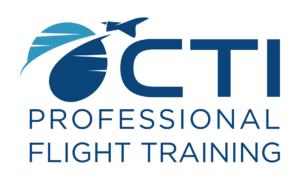Is Learning to Fly Safe?
If you’ve never piloted an aircraft before your instinct might tell you it’s dangerous. That would be true if you didn’t have any training or experience. Flying, like driving, certainly can be dangerous in certain situations. And like driving, with the proper training and experience, the risks of flying can be reduced and managed.
The Safest Way To Fly
The reality is being a student pilot is the safest way to fly. As a student pilot, you will have a very low chance of experiencing an accident. Statistics show that student pilots have some of the lowest accident rates. When you’re working on your private pilot certificate, you’ll be flying with highly trained pilots with thousands of hours of flight experience.
Small Airplane Accidents
The majority of aviation accidents take place in general aviation – not with major airlines. The National Transportation Safety Board noted that 95 percent of aviation accidents occur among private pilots. While this may seem unsettling, any student that has gone through training knows that a skilled pilot will have trained to react appropriately when faced with a risky situation.
You’re in Control
Flying a private plane is less dangerous than driving a car in many ways. Sometimes you will have a split second to react and avoid an accident when driving. You have to compete with all the other cars on the road and surrounding obstacles. But when you’re flying a small aircraft, you will face a reduced risk of colliding with another plan or object in the sky. With nothing in your way up in the air, many times, you’re in complete control of your own safety when flying.
When Things Go Wrong
When things go wrong and a plane does crash, about 75 percent of the time it’s due to pilot error. Events often occur from actions that a pilot either did or didn’t’ do. Although it’s always a concern, there is a sense of reassurance knowing that accidents usually don’t occur from something outside the pilot’s control.
There are some inherent risks to piloting an aircraft, and the main hazards include:
- Mechanical failures
- Poor visibility related to weather
- Maintenance errors
- Fuel mismanagement
- Takeoff and landing accidents
- Uncontrollable weather circumstances
Benefits of Learning to Fly
It’s always good to be aware of the risks, but weight the costs should be balanced by equally examining the benefits. Learning to fly comes with a number of big benefits including:
- New Adventures
- Joining a Close Community of Pilots
- Exciting Career
- The Joy of Flying
Ready to Learn to Fly?
The first step to getting your wings is finding a reputable flight school that offers the programs and certifications you’re looking for. It’s also a bonus if the flight school is located in an area with good weather, like Memphis or Florida. Once you’ve found your school, request a tour and see in person what the school has to offer.
